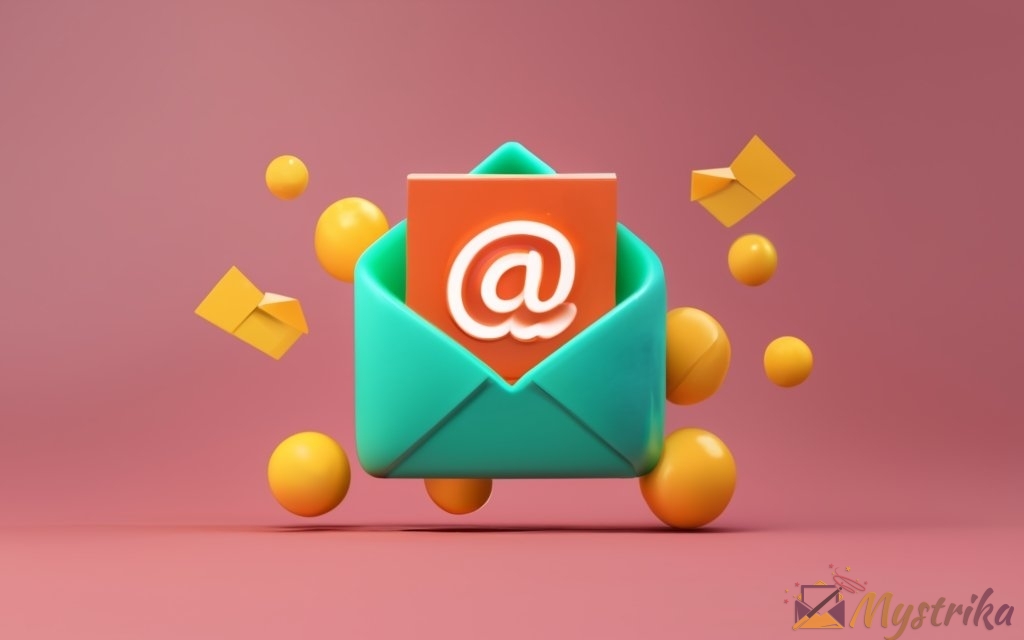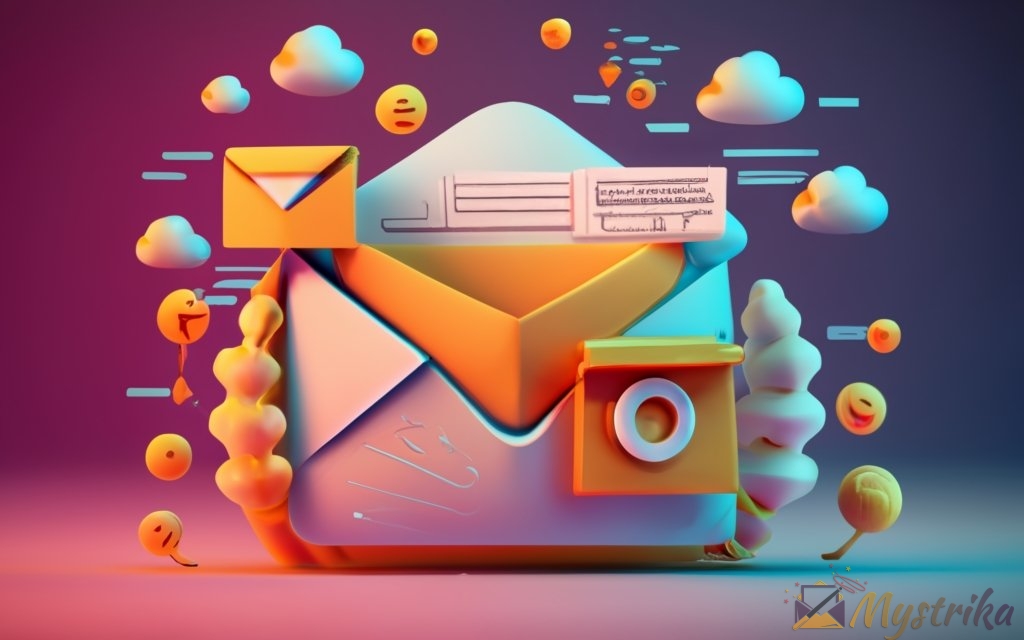Are you ready to unlock the full potential of email? From lead magnets to cart abandonment sequences, this comprehensive guide will show you how to engage subscribers and drive ROI across the entire customer lifecycle.
Discover the most effective types of campaigns, design practices, automation strategies, and metrics to track. Learn how to keep your emails out of the spam folder, create high-converting messages, and design workflows that move subscribers down the funnel. Whether you’re a seasoned pro or just getting started, this in-depth resource will take your email results to the next level!
Introduction to Email Marketing
Email marketing has become one of the most popular and effective ways for businesses to reach, engage, and convert potential customers. But what exactly is it and how did it become such a vital tool in the modern marketer’s toolkit?
What is Email Marketing?
Email marketing refers to the use of email to promote a company’s products or services, drive website traffic, generate leads, and build relationships with potential customers. It involves sending commercial messages typically in the form of regular newsletters, promotional emails, or automated messages to a list of subscribed recipients.
Unlike interruptive forms of marketing like TV or radio ads, email marketing requires the recipient to actively open and engage with the content. This means the success of an email campaign depends on crafting targeted, valuable messages that motivate subscribers to take action.
A Brief History of Email Marketing
Email marketing has come a long way since the first known commercial email was sent back in 1978 by a marketer at Digital Equipment Corporation to customers on the ARPANET. This sparked the idea of using email for promotional purposes, though adoption was relatively slow in the early days due to limited access to personal computers and consumer internet.
Things really took off in the mid-1990s as internet adoption skyrocketed. Marketers could now reach consumers directly in their inboxes without relying on traditional media. As dedicated email marketing platforms emerged, companies gained the ability to track opens, clicks, and conversions to optimize their efforts.
Regulations also evolved to crack down on spammers and establish opt-in standards. Key legislation like the CAN-SPAM Act established critical requirements for commercial emails. As deliverability challenges emerged, best practices formed around gaining subscriber consent, managing list hygiene, and enhancing relevancy.
Today, with over 4 billion email users globally, email marketing generates an estimated ROI of $42 for every $1 spent – the highest of any marketing channel.
Key Benefits of Email Marketing
There are a number of unique advantages that explain why email marketing has thrived:
- Cost-effectiveness – Sending emails is exponentially cheaper than printed direct mail and avoids the rising costs of digital ads. Email also provides tracking to measure ROI.
- Flexibility – Emails can be short and simple or extensive and detailed depending on your goals. Any content format – text, images, video – is supported.
- Segmentation – Email subscribers can be grouped based on demographics, interests, and behaviors for hyper-targeted campaigns.
- Personalization – Dynamic content and messaging based on subscriber attributes boosts engagement and conversions.
- Automation – Workflows based on triggers and user actions enable scalable, automated marketing.
- Delivery speed – Emails are received instantly, allowing for timely promotions and updates.
- Trust – Consumers actively opt-in to commercial emails they want, perceiving higher relevancy.
Key Challenges of Email Marketing
Despite its many advantages, email marketing also comes with a unique set of challenges:
- Deliverability – Avoiding spam filters and blacklists requires constant list hygiene and reputation management.
- Inbox congestion – With 273.6 billion emails sent globally each day, standing out is difficult. Subject lines and preheaders must be optimized.
- Relevancy – Consumers expect hyper-targeted, personalized messaging based on their interests and actions.
- Design limitations – Email clients have limited HTML/CSS support which can restrict creative design. Responsive design is essential.
- Changing regulations – Staying compliant with evolving data privacy regulations like GDPR is crucial for legal email marketing.
- Subscription fatigue – Constant list growth is needed to combat churn from non-engagement and changing consumer preferences.
The Bottom Line
When executed strategically with respect for the recipient, email marketing delivers unparalleled return on investment. However, success requires understanding the unique nuances of the inbox environment. Mastering list segmentation, automation, and continually optimizing based on data insights are musts for any effective email program.
In the following sections we’ll explore the most important types of email marketing campaigns along with proven tips and strategies for success. Let’s dive in!

Main Types of Email Marketing Campaigns
Now that we’ve covered the basics of email marketing, let’s explore some of the most common and effective types of email campaigns used by marketers today.
Broadly, marketing emails fall into four primary categories:
Lead Generation Emails
These emails aim to capture new leads and move prospects down the funnel toward a conversion.
Educational Emails
Educational emails provide value by teaching subscribers about your product, industry, or other useful topics. For example, you could share tips for using your product more effectively or provide guides on completing a task your target customer needs help with. This builds trust and authority.
Newsletters
Regular newsletters are a great way to nurture leads. You can feature new blog posts, product updates, special offers, and other news to keep your brand top of mind. Maintain a consistent cadence like weekly or monthly.
Limited-Time Offers
Leverage the scarcity principle by promoting discounted pricing, free trials, or other perks available for a limited time only. The expiration date creates urgency to act.
Free Trial Offers
A time-limited free trial is a great way to convert leads by letting them experience your product. Be sure to highlight the value they will gain. Follow up with an offer to begin paying at the end of the trial term.
Lead Nurturing Emails
Lead nurturing uses personalized email sequences to engage prospects who aren’t sales ready. Provide tailored content that brings value and moves leads down the funnel based on their lifecycle stage and interests.
Event Invitations
Promote your upcoming webinars, conferences, and other events through email invitations. Share key details and use urgency around limited seating to drive registrations.
Relationship Building Emails
These emails aim to create a connection with subscribers or customers to improve retention and loyalty.
Welcome Emails
Welcome new subscribers by introducing yourself, sharing your brand story, and explaining the value they can expect from your emails. This makes a great first impression.
Post-Purchase Emails
Follow up after a purchase with order confirmations, tracking info, troubleshooting tips, or links to relevant resources like help docs. This builds trust and satisfaction.
Customer Surveys
Solicit feedback directly through post-purchase surveys or NPS polls. This provides insights to improve while making customers feel valued.
Re-Engagement Emails
If subscribers are inactive for a period, trigger personalized emails to remind them about your brand and bring them back into the fold. Offer incentives to re-engage.
Loyalty Program Emails
Send targeted offers, rewards and VIP perks exclusively to loyalty program members. This makes them feel special and provides a reason to maintain the relationship.
Promotional Emails
These emails focus on promotions to generate sales of products or services.
New Product/Feature Announcements
Inform subscribers about enhancements to your offerings such as new products, features, integrations, etc. Share details about benefits and value.
Holiday/Seasonal Offers
Leverage holidays, events, and cultural moments with time-sensitive promotions. Tailor messaging and offers to align with the season or theme.
Cart Abandonment Emails
Remind customers who left items sitting in their online cart without completing the purchase. Share a message reinforcing value and include an incentive to complete checkout.
Upsells/Cross-sells
Suggest complementary or higher-tier products that customers may be interested in during the checkout process or after purchase.
Reviews and Testimonials
Proactively requesting positive reviews and testimonials from satisfied customers can build social proof and credibility for new leads.
Automated Emails
These one-to-one emails get triggered automatically when users complete actions.
Confirmation Emails
Order confirmations, event registrations, contact form submissions, and other actions should autmatically trigger a confirmation email with key details and links.
Receipt Emails
Deliver order receipts, ticket purchases, or billing summaries on a transactional basis. Include customer service contact info for follow-ups.
Password Reset Emails
Facilitate self-service password resets by sending an automated email with a secure link to change the password when requested by user.
Abandoned Cart Emails
Remind customers who added items to their cart but didn’t complete checkout with a timely, relevant offer to incentivize purchase completion.
Milestone Celebration Emails
Acknowledge important milestones like anniversaries, loyalty status upgrades, and product adoption goals. This increases retention and satisfaction.
The Bottom Line
Having a balanced email marketing program requires utilizing different types of campaigns tailored to specific business objectives – from driving conversions to reducing churn. Assess your needs, research competitor approaches, and test different email types to determine the ideal mix to strengthen relationships across the entire customer lifecycle.
In the next section, we’ll explore some proven strategies and best practices to maximize the impact of your email marketing efforts.

Best Practices for Email Marketing
Now that we’ve explored the core types of email marketing campaigns, let’s look at some proven strategies and best practices to maximize your results.
Growing Your Email List
Opt-in Forms
Place opt-in forms strategically throughout your website to motivate visitors to subscribe. Offer a compelling lead magnet like a discount or content exclusive in exchange for their email address.
Lead Magnets
Create valuable free content assets like ebooks, templates, and tools that website visitors can access by subscribing to grow your list.
Website Popups
Use timed site popups, exit intent popups, and scroll-based popups to present opt-in offers to visitors before they leave your site. Keep messaging relevant.
Social Media
Promote your opt-in offers and lead magnets on social media. For example, run a landing page postcampaign on Facebook with an email opt-in.
Retargeting Ads
Remarket to visitors who left your website without subscribing through retargeting ads on platforms like Facebook and Google.
The Bottom Line
Test a combination of organic and paid tactics for generating email subscribers tailored to your business model and target audience. Prioritize doubling down on the strategies that prove most effective.
Email Deliverability
Avoiding Spam Filters
Practice careful list hygiene, provide unsubscribe options, only email subscribers who opted-in, and avoid spam trigger words to prevent blacklisting.
Managing Bounce Rates
Continuously prune bad or inactive email addresses from your lists. Leverage double opt-in and re-engagement campaigns to keep data clean.
Maintaining Sender Reputation
Monitor critical metrics like spam complaints, unsubscribe rates, and engagement. Prioritize relationship-building over aggressive batch sends.
The Bottom Line
Deliverability takes constant vigilance. Follow best practices, optimize based on ISP feedback, and focus on driving engagement with subscribers.
Email Design and Personalization
Mobile Optimization
Over 50% of emails are opened on mobile. Use responsive templates optimized for smaller screens and easy tapping.
Personalized Subject Lines
Leverage merge tags to incorporate the recipient’s name and lifecycle data into subject lines. This boosts open rates.
Dynamic Content
Vary content and messaging in real-time based on target segments and subscriber attributes using personalization.
Effective Calls-to-Action
Prominently position clickable CTAs that use action-oriented verbs and leverage contrasting colors.
The Bottom Line
Personalized design and content tailored to subscriber needs boosts engagement and conversions. Always focus on mobile speed and readability.
Email Automation
Welcome Sequences
Deliver a series of emails over time to onboard new subscribers instead of just a single welcome email.
Lead Nurturing Flows
Move leads through a multi-email journey that provides relevant content matched to their lifecycle stage.
Transactional Emails
Leverage automation to trigger confirmation, receipt, and other one-to-one emails based on user actions.
Customer Lifecycle Workflows
Orchestrate targeted email campaigns focused on subscriber milestones from first purchase to loyalty.
The Bottom Line
Workflow automation enhances the subscriber experience and takes email relevancy to the next level. Map subscriber journeys to align with conversion funnels.
Conclusion
Email marketing comes with unique intricacies given the personal nature of the inbox environment. Following data-backed best practices and constantly optimizing based on performance metrics are critical to maximizing your email ROI.
Let’s wrap up with a look at key metrics to track and final takeaways.

Key Email Marketing Metrics to Track
To continually refine and optimize your email marketing results, it’s essential to monitor performance through actionable metrics. Here are some of the most important KPIs to measure.
Open Rates
The open rate shows the percentage of total recipients who opened your email. This indicates your subject lines and preview text are motivating enough subscribers to engage.
Benchmark: The average open rate across industries is 20-25%.
What to track:
- Overall open rate trend over time
- Open rates by campaign, list segment, day/time sent
- Performance of different subject lines
- Winning subject line length, content
Optimization tips:
- Test different subject lines, preheaders
- Leverage segmentation and lifecycle targeting
- Send at optimal days/times for each audience
- Freshen creative, content over time
Clickthrough Rates
Clickthrough rate (CTR) measures the percentage of recipients who clicked any link within your email. It reflects content relevancy and call-to-action effectiveness.
Benchmark: Average CTR is 2-3%. Top performing emails drive 5%+ CTR.
What to track:
- CTR trend over time
- CTR by link location, offer, design
- Performance of different CTAs
- CTR by segment and campaign objective
Optimization tips:
- Place CTAs strategically in naturally fitting positions
- Use contrasting colors and action-oriented verbs
- Test CTA language and behavior triggers
- Ensure linked pages are relevant
Bounce Rates
Bounce rate shows what percentage of your emails failed to reach subscribers due to invalid email addresses. High bounce rates hurt sender reputation.
Benchmark: Industry best practice is keeping bounce rate below 2%.
What to track:
- Bounce rate trend over time
- Reasons for bounces (hard vs. soft)
- Partial vs. full inbox provider blocks
- Bounces by list segment
Optimization tips:
- Actively prune bad addresses
- Implement re-engagement campaigns
- Offer double opt-in for new subscribers
- Seek inbox provider feedback
Unsubscribe Rates
The unsubscribe rate reveals what percentage of recipients clicked on an unsubscribe link. A sudden rise can indicate relevancy issues.
Benchmark: Average unsubscribe rate is 0.1% or less.
What to track:
- Unsubscribe rate trend
- Unsubscribes by campaign, segment, demographic
- Surges following deployment changes
- Unsubscribe reasons and feedback
Optimization tips:
- Re-confirm subscriber preferences
- Increase messaging personalization
- Assess email frequency, content against expectations
- Make unsubscribing easy
Conversions & Revenue
Ultimately, the key indicator of email success is the revenue and conversions generated. Be sure to track both macro and micro conversions.
What to track:
- Sales directly attributed to emails
- Subscriber-to-customer conversion rates
- Email driven leads, sign-ups, downloads
- Micro conversions like clicks, shares, etc
Optimization tips:
- Measure lifetime value of email-captured leads
- Integrate email analytics with your CRM
- Review sales cycle stage progression driven by email
- Isolate high-converting segments and strategies
The Bottom Line
Leverage a combination of email analytics and cross-channel attribution to maximize visibility into what’s driving results. Set goals and alerts to stay on top of trends. Always be testing and optimizing!
Now let’s wrap up with some key takeaways.

Conclusion and Key Takeaways
In this comprehensive guide, we covered everything you need to know about planning and executing a winning email marketing strategy.
Let’s recap the key points:
Types of Email Marketing Campaigns
- Lead generation emails like newsletters, lead nurturing, and promotions help capture new prospects
- Relationship building emails such as welcome and post-purchase sequences boost engagement and loyalty
- Promotional emails drive conversions with limited-time offers, upsells, and content announcements
- Automated emails handle transactional use cases like confirmations and receipts
Best Practices
- Grow your list through on-site opt-ins, lead magnets, website popups and social promotions
- Maintain deliverability by reducing bounces, avoiding spam filters and pleasing ISPs
- Make mobile-friendly, personalized emails with strong CTAs for optimal impact
- Automate sequences and workflows tailored to the subscriber lifecycle
Key Metrics to Track
- Open rate indicates subject line effectiveness
- Clickthrough rate reflects content relevancy and CTA optimization
- Bounce rate impacts sender reputation so aim to keep it minimal
- Unsubscribe rate reveals problems with messaging or frequency
- Sales and conversions attributed to emails reflect true ROI
The Importance of Testing & Optimization
Email marketing comes down to continuously testing and incrementally optimizing based on opens, clicks, revenue, and other data points.
Experiment with different:
- Subject lines and preheaders
- Send days and times
- Content formats like text vs. visual
- Calls-to-action
- Automated workflows
There is always room for improvement. Be relentless about finding what resonates best with your unique audience.
In Summary
Email marketing remains one of the most cost-effective ways to engage with prospects across the buying journey. By combining compelling creative with behavioral data and automation, your inbox-based outreach can drive impressive results. Just keep the subscriber experience front and center.
Hopefully this guide provided a comprehensive overview of proven email marketing tactics and strategies to engage your audience. The key is to continually test new approaches and double down on what works. Your inbox awaits!
Summary
- Email marketing refers to sending commercial messages to a list of subscribers to promote business objectives. It generates the highest ROI of any marketing channel when executed effectively.
- Core email types include lead generation, relationship building, promotional, and automated transactional messages. Assess your business goals and build a balanced sending strategy.
- Growing your list requires an integrated, ongoing approach combining organic and paid tactics tailored to your audience. Offer lead magnets in exchange for opt-ins.
- Maintain high deliverability by carefully managing list hygiene, monitoring sender metrics, and keeping content relevant to subscribers.
- Every email should be mobile-friendly, personalized, and contain a strong call to action. Test different elements like subject lines and content types.
- Leverage email automation to deliver sequences and workflows matched to subscribers’ lifecycle stage and behaviors for maximum impact.
- Continuously track opens, clicks, revenue, and other KPIs to optimize your approach and isolate the strategies that work.
- Email marketing is all about relentlessly testing and incrementally improving based on subscriber data and engagement. Put your audience first and keep innovating!
Frequently Asked Questions
What is the best day and time to send emails?
Testing timing for each audience is recommended, as day/time preferences can vary. In general, mid-week days (Tuesday – Thursday) from 10 AM – 2 PM tend to perform well. Avoid weekends and late nights.
How often should you send emails?
1-2 times per week is ideal for most sales & marketing emails to avoid fatigue. For purely informational newsletters, monthly is common. Gauge engagement to determine optimal frequency.
What is an average email open rate?
The cross-industry average open rate is 20-25%. Well-optimized emails can achieve 30%+. If your open rate is under 15%, there is room for improvement.
What is a good email clickthrough rate?
The average CTR is about 2-3%. For top performing emails, aim for 5%+ CTR. If under 1%, your CTAs, content and layout need optimization.
What is the average email unsubscribe rate?
Industry best practice is under 0.2% unsubscribe rate per campaign. Anything higher than 1% regularly can indicate relevancy issues.
How can you improve deliverability?
Focus on list hygiene, managing bounces, honoring unsubscribes, gauging spam complaints, and crafting engaging content subscribers want.
What are tips for writing effective subject lines?
Keep under 50 characters. Use subscriber names. Leverage curiosity and urgency. Test emojis, brackets, questions, and numbers. Avoid spam triggers.
How do you create high-converting emails?
Focus on a single compelling offer, make the layout scannable, highlight value, use dynamic content, optimize mobile experience, and prominently position the CTA.
What metrics are most important to track?
Monitor opens, CTR, bounces, unsubscribes, conversions, revenue, social sharing, list growth, and ROI (return on investment).
How can you re-engage inactive subscribers?
Send customized campaigns asking for feedback, offering an incentive to return, highlighting new content, or simply check in to regain mindshare.

